- Views2789
- Likes0
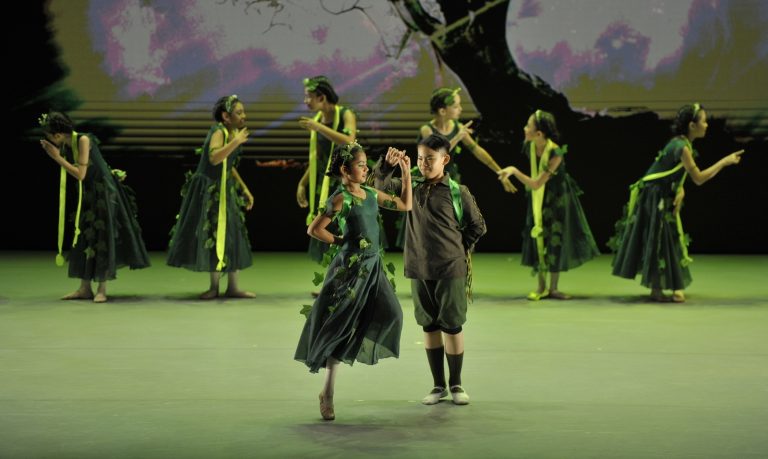
Festival of Dance VIII
9-12 March 2023
Petaling Jaya Performing Arts Centre
Produced by The Dance Society of Malaysia
Review by Bilqis Hijjas
A lot has changed since the first TDS Festival of Dance, in 1991. The festival is produced by The Dance Society, a non-profit organisation founded by Malaysian ballet pioneer Lee Lee Lan. During her lifetime, Mrs Lee witnessed – and instigated – many significant developments in Malaysian dance, particularly in ballet. She died last year, at the age of 78, and this eighth edition of the festival was held in her memory. I caught the closing performance, which, with 29 works by 16 dance studios and 3 invited dance companies, provides a handy snapshot of the current state of ballet in the nation, and a measure of how far we’ve come.
The performance opened with a video, compiled and edited with great dedication by Hii Ing Fung and Kathryn Chew of Dance Body Project, recalling Mrs Lee’s career and achievements. Her former students – many of them now respected teachers in their own right – speak of her with love and gratitude, making clear the enormous impact that one visionary teacher can have on the generations that follow.
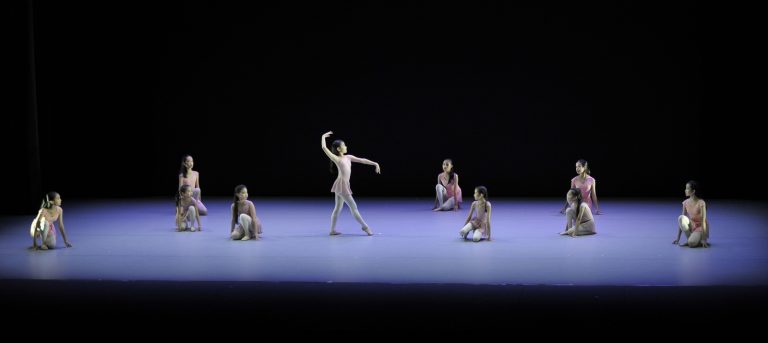
Themes of the vocation of teaching and the value of mentorship resonate throughout the performance. Vivace Dance Academy’s “Again” was didactic in all senses of the word – when the harried student finally announces, “I quit!” I inwardly applauded her, but of course, given the moral of the story, she went back to the barre in the end. Sri Wilayah Ballet Centre’s breezy but accomplished “Begin Again“, with girls in skirted practice tutus with their hair half up, suggested a more relaxed approach to ballet, in which the little dancers seemed to enjoy themselves.
Asia Ballet Academy’s “To Pass On” culminated in a simple but affecting scene: the little girl on stage showed us ballet’s first position, then second, as the video on the backdrop zoomed out to show a whole roomful of students demonstrating fourth and fifth position, under the title “In Memory of Ms Lee Lee Lan”. A reminder that although our individual trajectories may end up very different, we all start ballet in the same way and build our way up from the basics.
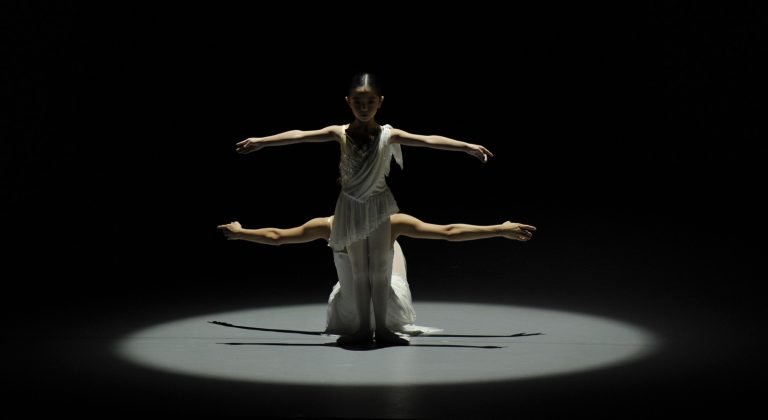
But “To Pass On” began by comparing ballet to much more ambitious achievements. Grandiose music accompanied a breathless video timeline of Malaysia’s industrial development, climaxing with a shot of the Petronas Twin Towers. The analogy between the development of ballet and the modernisation of Malaysia is not unusual. In her program book message, TDS patron Tunku Dara Naquiah writes, “Ballet and all dance forms have improved so much technically since independence.” Given that ballet was brought to Malaysia by the British (notably in the person of Ethel Foxcroft, Mrs Lee’s first ballet teacher) it’s perhaps not surprising that we unconsciously equate our capacity to master fouettés with our right to be a self-governing nation.
Ballet in Malaysia continues to exist in the shadow of British colonialism, with the Royal Academy of Dance (UK) and the Commonwealth Society of Teachers of Dancing the dominant professional networks for teaching and teacher training. But now there are other geopolitical currents at play. Alfren Salgado, the Filipino choreographer of two works in the festival program, is an alum of Ballet Manila, and comes from the Vaganova method of ballet training, as does Hong Kong-trained Ivy Chung who started Asia Ballet Academy. Other choreographers in the festival program have had formative experiences in other parts of the world: Tay Hwan Haw in Singapore, Raziman Sarbini and Shirena Hamzah in the USA, Choong Wan Chin in Japan, and many in Hong Kong and other parts of China. When they return to Malaysia, they bring many new stylistic approaches as well as methods of training home with them.
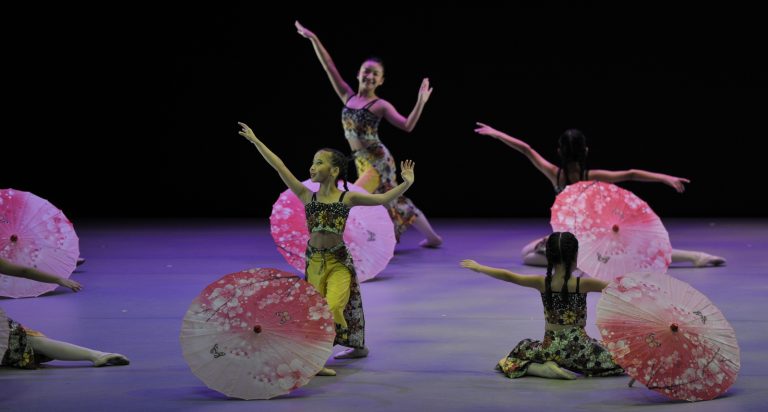
So it’s perhaps unsurprising that the TDS Festival showed little content from the participating ballet studios that is distinctly Malaysian. Many of the ballets featured dancers as flowers, trees or seeds – the pleasant staples of ballet recitals – and notably there were two works titled “Spring” (which is ironic for a country that has no seasons). Only one work, Sandance Ballet Studio’s “Comel Pipi Merah”, offered a touch of localness, the dancers twirling pink Chinese parasols to a tune by Siti Norhaliza.
Two studios presented Chinese dance works; masterfully costumed and presented, they both opted for versions of dances by ethnic minorities in China, which have become fashionable there, despite representing minorities that have no real presence in the Chinese community in Malaysia. Danceland Ballet Academy’s “Season of Harvest” presented a Yi ethnic minority style, with rhythmic body percussion and beaded costumes, and Agape Music & Ballet Studio presented “Di Wei Shin Kan, New Wei Shin Kan” in an expressive Tibetan style, with torsos leaning deeply forward and movements of rocking and hugging the self. Seeing dance trends from China being recreated faithfully in our country hints at China’s rising cultural dominance in the region.
Representing the Indian cultural contingent is Sutra Dance Foundation, founded in 1983 and long a stalwart at TDS Festivals. But this TDS Festival lacked any Malay or East Malaysian dance entities, although they have appeared in TDS Festivals in the past. Although TDS has, to its credit, attempted to increase local flavour by requiring a choreographed variation with Malaysian elements in its annual Solo Classical Ballet competition, its absence in the ballet studio works in this festival suggests a widening gulf between the ballet studio community and other local dance industry players.
Perhaps the university dance departments of ASWARA, UM and UPSI (none of which existed in 1991) have taken up the mantle of developing a Malaysian identity for dance. I wonder if ballet in Malaysia has become content to ignore its localness because it aspires to play in the international league. But as it declines to engage with local artistic and social concerns, does it risk becoming somewhat irrelevant to the wider Malaysian dance community, a niche technical field for students who aspire only to a career overseas?
Speaking of careers, another conspicuous absence in the program was Ballet Theatre Malaysia. Although TDS President Sunny Chan wrote in his program notes, “It is now wonderful to see… the formation of Ballet Theatre Malaysia, a professional dance company”, his applause was sadly premature. It seems that BTM, which debuted to much fanfare in December 2021, has quietly closed its doors after four performance seasons. Malaysian ballet students must continue to go overseas at a young age if they hope to land a job in a professional ballet company. I spotted some of BTM’s talented dance scholars in the pieces by KL Dance Works, helmed by former BTM artistic director Choong Wan Chin, but the more senior BTM dancers were sadly nowhere to be seen.
One alternative local future for today’s ballet students is to mature into Kenny Shim Dance Collective. The choreographer has proved masterful at hothousing talented dancers in large group works in a contemporary ballet style, like “Exodus” in this festival. To a techno score that shook the seats in the audience, the dancers revolved as sleek and uncompromising as androids in Star Trek uniforms, against a geometric video projection. Another option is the sophisticated Chinese dance of Matt Tan’s WUXU Dance Troupe; in “Silva” the skilled and sinuous Wong Chi Ying commanded a chorus of dancers in large obscuring hats, performing this ethnic Dai-influenced style, amid an atmosphere of dark suspense.
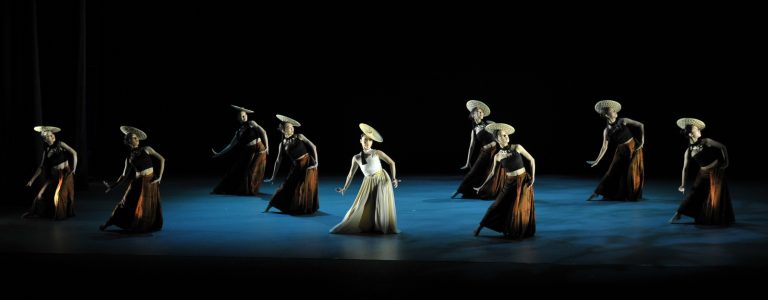
At least now Malaysia’s ballet dancers have state-of-the-art venues where they can strut their stuff, in contrast to 1991, when you could hire the creaking hulk of PJ Civic Centre or nothing. The sparkling new PJ Performing Arts Centre, with its fancy LED backdrop (which threatened to drown out some of the works), is only the most recent addition to the constellation of private performing arts complexes that now dot the wealthier parts of the Klang Valley.
The venues have changed, and so have the major players. Federal Academy of Ballet, the studio that Lee Lee Lan founded in 1967, is no longer the undefeated heavyweight in the ballet studio scene that it was in 1991. This is partly for the better – the field has grown so much that barely any collection of shophouses in a mid-sized town in Malaysia does not boast its own ballet studio. The fates of studios tend to rise and fall, anyway, reflecting the energies of their single founders. From this TDS Festival, it appears that other players, including KL Dance Works, Dance Space, Dancesteps Studio and Asia Ballet Academy, now dominate.
Dancesteps Studio also seems to have cornered the market in tap, classic jazz and Broadway, which used to be minor money-spinners for many ballet studios, but which have largely given way to K-pop and hip hop. Dancesteps demonstrated its monopoly with the massive Lion King-flavoured “Rhythm of Pride Lands“: almost 20 dancers delivering a well-rehearsed, sassy yet tasteful routine.
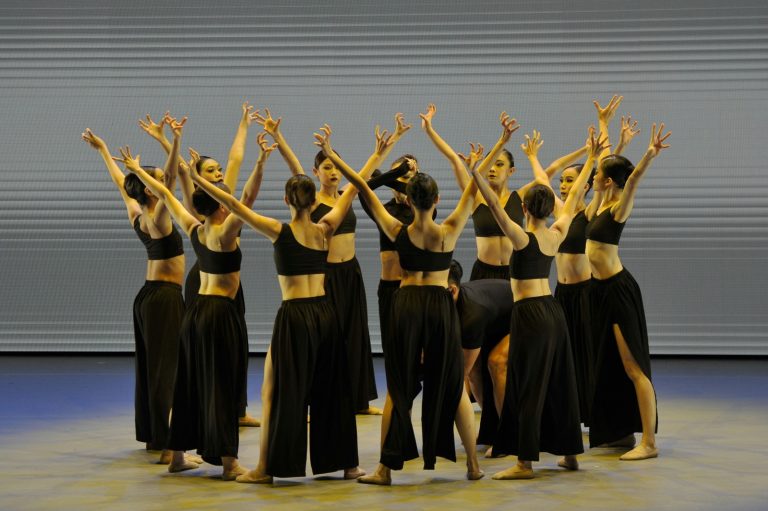
The contemporary ballet genre in Malaysia is now more prominent that it used to be. In 1991, there was no So You Think You Can Dance, but its gesticulate-to-the-lyrics emo style with showy partnering is now widespread here. A perfect example in this festival was Alfren Salgado’s fast-paced and well-rehearsed “MEA”. The wow-heavy stunt-focused American competition style hadn’t reached our shores then either, but got a strong showing here with Raziman Sarbini’s “Symphony of Us”, a powerful en pointe routine with synced échappés and humongous jetés, to an almost cheerleader soundtrack. Dance as a competitive sport got another outing with Dancelink Performing Arts’ “Wild Flower” (also by Salgado), a polished but rather severe chair dance for girls with exposed midriffs and intimidating black lipstick, to Ravel-like dramatic music. (It was almost a relief to see from the ending medley in the finale that the Dancelink girls, still in black lipstick, were not noticeably better than the other students – just admirably well-drilled for “Wild Flower”.)
In general, everyone looked better – more polished, more sophisticated, more in control – certainly than the last TDS Festival of Dance, almost fifteen years ago in Putrajaya in 2009 (I was there, performing with Balletbase – itself a casualty to the passing of time). More studios seem to be containing their students within age-appropriate movements which are comfortably within the students’ range, like the charming “Magical Trees” by Meadow Ballet. (There is also more knowledge of children’s creative dance now: in “Blooming”, by Lief in Dance Centre, all the tiny dancers might not have had the best legs, but they all seemed to understand WHY they were doing what they were doing, which is rare in children’s dance.)
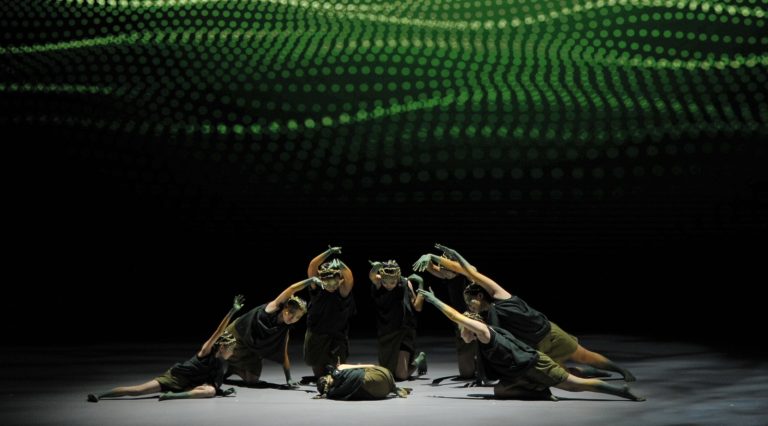
But staying safely within range can also feel somewhat limiting, as in the technically commendable but tight-laced “Jardin Animé” by KL Dance Works, complete with classical flower arches. Very occasionally, it can be refreshing to see dancers working outside their range – just going for it, rocking the tutus and tiaras in their own way.
A lot of things have changed since 1991. Some things have not. The gender imbalance in ballet is one. Also the fact that, despite YouTube and TikTok and Insta-stars, ballet still takes years of dedicated, almost monastic, study – there are no shortcuts.
And through it all, since Lee Lee Lan founded it in 1986, is The Dance Society, and its president, Sunny Chan. When you consider the legacy of The Dance Society, Sunny’s contribution to Malaysia’s ballet community, together with that of long-time vice-president Lee Yupin, has been immense – rivalling even Mrs Lee herself. Voluntary organisations are even more fragile, and often shorter-lived, than profit-making ballet studios. And yet TDS soldiers on, slowly transitioning to younger leaders, the succession quietly going on behind the scenes, as they continue to bring ballet studios together upon the stage. It’s been a great pleasure – as well as enormously instructive – to see the TDS Festival of Dance once again. I hope it’s not another 15 years until the next one.
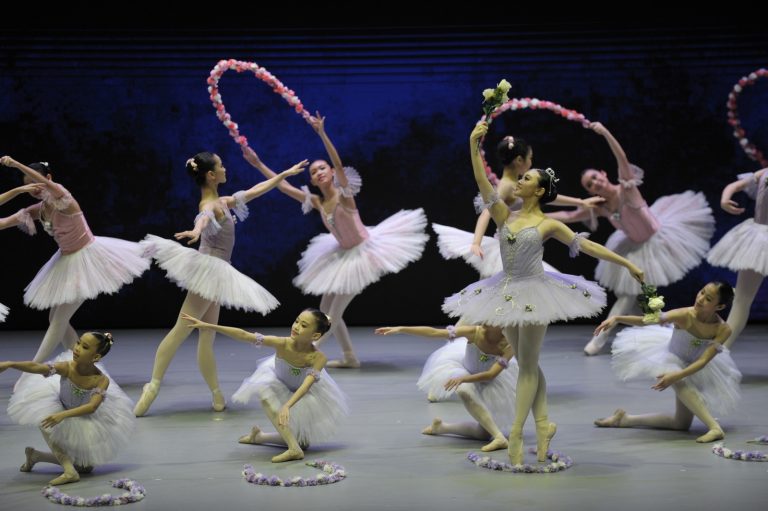
With many thanks to James Quah, who generously provided all the photos.
Bilqis Hijjas is the founding editor of Critics Republic. Formerly a producer and organizer in contemporary dance, she believes the main purpose of criticism is to enhance the audience’s appreciation of art. Thanks to Hii Ing Fung for insights into Chinese dance in Malaysia; however, all opinions here are the author’s own and she takes all responsibility for any errors.